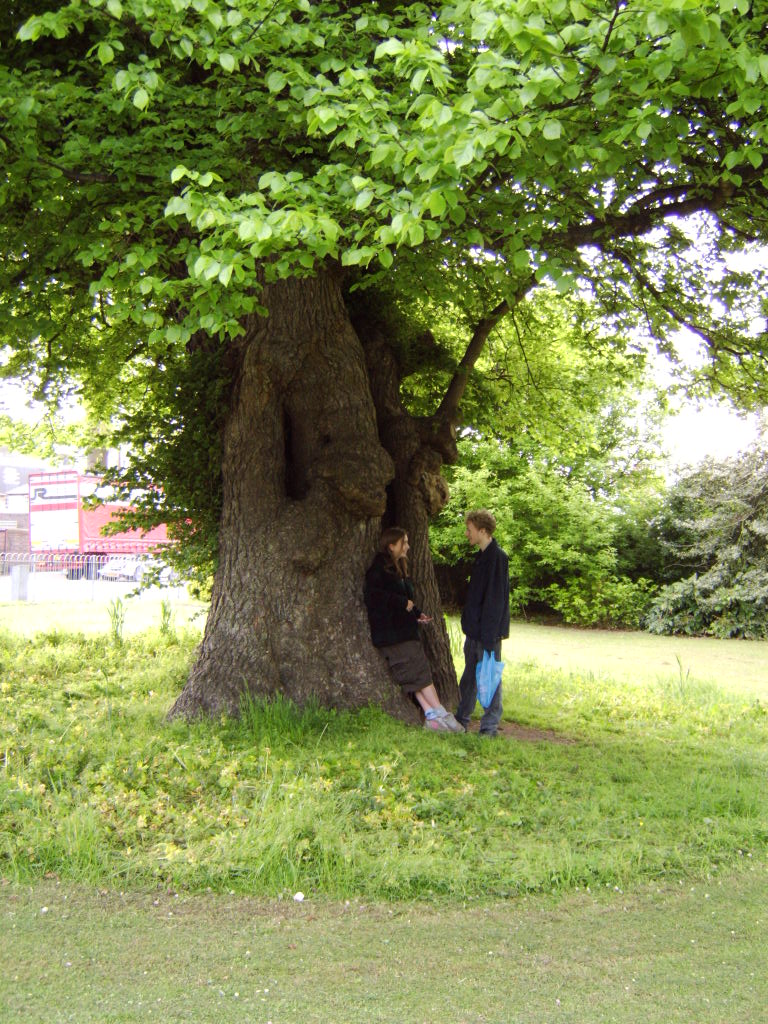Preston Twins on:
[Wikipedia]
[Google]
[Amazon]
 The Preston Twins were a pair of
The Preston Twins were a pair of
 The Preston Twins were a pair of
The Preston Twins were a pair of English elm
The field elm (''Ulmus minor'') cultivar 'Atinia' , commonly known as the English elm, formerly common elm and horse may, Republished 1978 by EP Publishing, Wakefield. and more lately the Atinian elm was, before the spread of Dutch elm diseas ...
(''Ulmus minor'' 'Atinia') trees that grew in Brighton
Brighton () is a seaside resort and one of the two main areas of the City of Brighton and Hove in the county of East Sussex, England. It is located south of London.
Archaeological evidence of settlement in the area dates back to the Bronze A ...
, England at the northern end of Preston Park. They were planted around 1613 and were "almost certainly" planted as part of a hedgerow
A hedge or hedgerow is a line of closely spaced shrubs and sometimes trees, planted and trained to form a barrier or to mark the boundary of an area, such as between neighbouring properties. Hedges that are used to separate a road from adjoini ...
. Believed to be among the oldest and largest English elm trees in the world, they reached heights of more than and widths of . An outbreak of Dutch elm disease
Dutch elm disease (DED) is caused by a member of the sac fungi (Ascomycota) affecting elm trees, and is spread by elm bark beetles. Although believed to be originally native to Asia, the disease was accidentally introduced into Americas, America ...
in England in the late 1960s caused Brighton to enact several measures to protect its 17,000 elm trees, including setting traps for the beetles that spread disease. They also dug trenches between neighboring elms to prevent the disease from passing easily from tree to tree via their root systems. Infected branches were pruned
Pruning is a horticultural, arboricultural, and silvicultural practice involving the selective removal of certain parts of a plant, such as branches, buds, or roots.
The practice entails the ''targeted'' removal of diseased, damaged, dead, ...
and destroyed in efforts to save trees.
In 2017, a storm caused a large limb to break from the eastern twin, which showed that its trunk was entirely hollow. The tree appeared to respond well to pruning to reduce the weight of its limbs. Prior to its damage and branch loss, it had been the larger of the two trees. The storm-damaged eastern twin became infected by Dutch elm disease, likely in summer of 2018. It did not show any symptoms of infection until the following summer, by which time the disease had already spread to its roots. A trench was immediately dug between the two twins to sever their connecting roots.
In December 2019, the infected tree was cut down. It was hoped that cutting it down would prevent Dutch elm disease from spreading to the other twin. In 2008, a cutting
Cutting is the separation or opening of a physical object, into two or more portions, through the application of an acutely directed force.
Implements commonly used for wikt:cut, cutting are the knife and saw, or in medicine and science the scal ...
of the eastern twin was planted in Amsterdam
Amsterdam ( , , , lit. ''The Dam on the River Amstel'') is the Capital of the Netherlands, capital and Municipalities of the Netherlands, most populous city of the Netherlands, with The Hague being the seat of government. It has a population ...
.
In 2018, the eastern twin was shortlisted in the Tree of the Year competition.
See also
*List of elm trees
Many elm (''Ulmus'') trees of various kinds have attained great size or otherwise become particularly noteworthy; among these are the following.
American Elm ''Ulmus americana''
Most of North America's notable elms are ''Ulmus americana'', a fast- ...
* List of individual trees
The following is a list of notable trees. Trees listed here are regarded as important or specific by their historical, national, locational, natural or mythological context. The list includes actual trees located throughout the world, as well as ...
References
{{reflist Individual elm trees 2010s individual tree deaths Individual trees in England